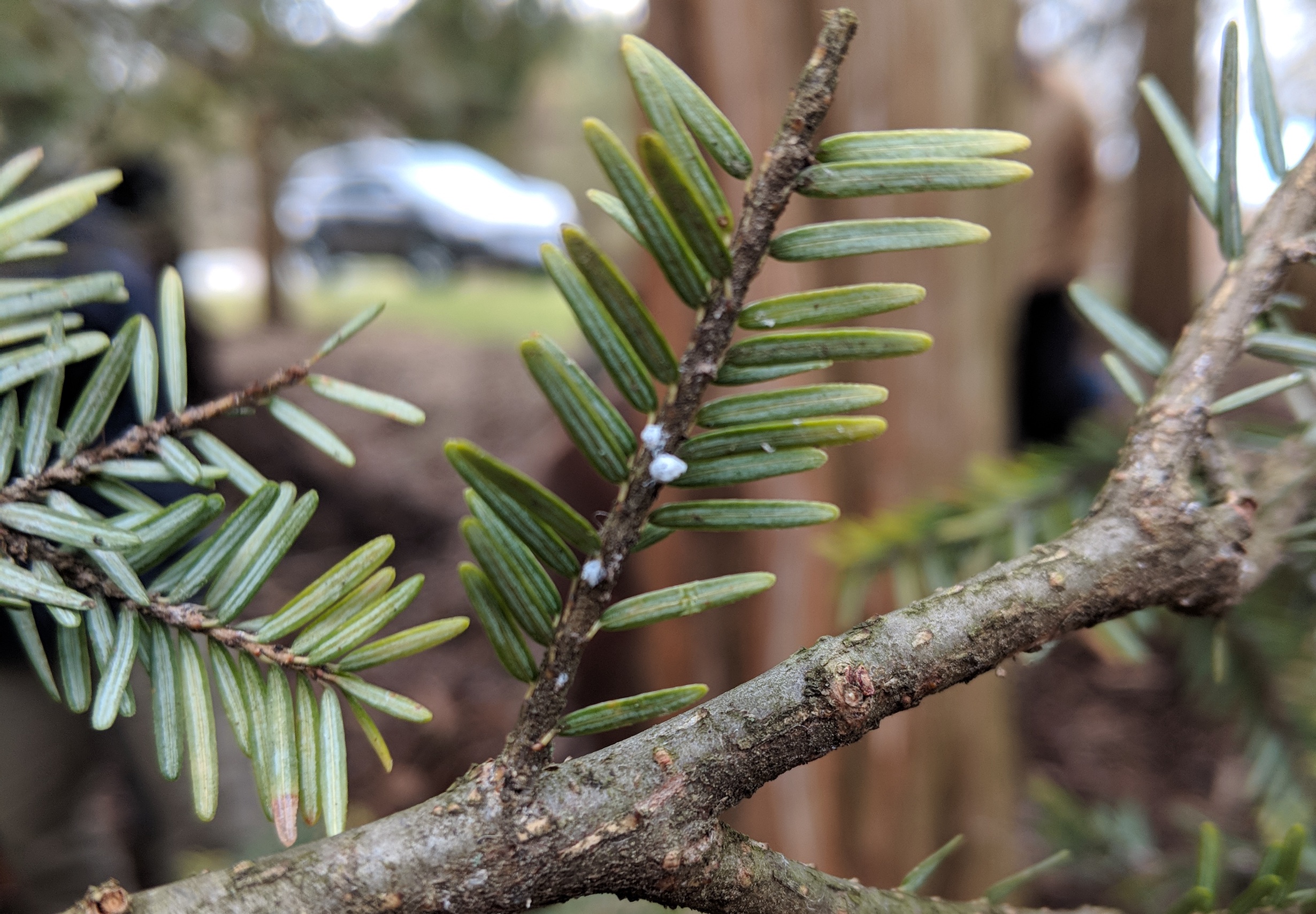Hemlock Woolly Adelgid
Hemlock Woolly Adelgid (HWA) is a non-native, aphid-like insect. It is less than 1.5 millimetre in size and feeds on nutrient and water storage cells found in Hemlock tree needles. This can cause the tree stress and eventually, death.
While it hasn’t been found in Mississauga yet, it has been found in the following locations in Ontario:
- Fort Erie
- Grafton
- Hamilton
- Pelham
- The Niagara Gorge
- Wainfleet
What it looks like

Why Hemlock Woolly Adelgid is a threat
The loss of Hemlock trees caused by HWA can impact our ecosystem in the following ways:
- Accelerated erosion and sedimentation
- Reduced habitat and food sources for wildlife
- Reduced shade for streams, which can impact fish and other aquatic organisms
- Higher heating and cooling costs in residential areas
How it spreads
HWA can spread through the wind, animals or people moving around wood.
How to spot an infection
Hemlock trees infested with the HWA can be identified by:
- White sacs (looks like small wool) at the base of the tree’s needles on younger twigs
- Thinning and change of colour (greyish-green) at the crown of the tree
- Early bud and shoot dieback (the gradual death trees or shrubs starting at the tips)
- Loss of needles
- Increased dropping of twigs and branches
- Unhealthy looking branches
- Yellowing and discoloured foliage
What we are doing
The City is actively monitoring for HWA in Mississauga woodlands that contain Hemlock trees.
In addition, the City is providing educational resources and awareness training to Mississauga residents and staff to increase chances of early detection of HWA.
What you can do
You can help protect Hemlock trees on your private property and the City by:
- Learning how to identify Hemlock trees and HWA
- Becoming aware of the signs of infestation on your trees
- Contacting a tree care company to have your trees inspected if you suspect an infestation
- Avoiding putting bird feeders in or near your trees, as birds can transport HWA
- Not moving firewood, nursery stock or logs around
- Sourcing your firewood from local forests
- Buying Hemlock trees from local sellers and ask them where the tree is from
- Inspecting the tree before you buy it
- Increasing your tree’s resilience to HWA and other pests and diseases by keeping it healthy
- Reporting suspected HWA to Canadian Food Inspection Agency or calling 311 (or 905-615-4311 from outside Mississauga)